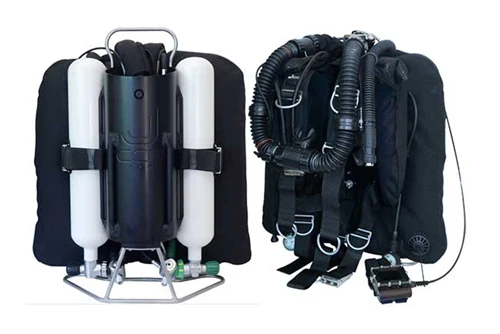Diving is an exciting and adventurous activity that opens the door to the beautiful underwater world. To fully enjoy this experience, it is important to choose the right diving equipment. Rebreathers, or closed-circuit breathing systems, have become increasingly popular among divers, offering several advantages over traditional open-circuit diving cylinders. In this article, in collaboration with diving instructor Valters Preimani, we will explore the advantages of rebreathers compared to conventional diving cylinders.
An overview of the advantages of rebreathers (closed-cycle) over conventional diving cylinders (open-cycle), divided into five parts with an introduction and conclusion, as well as three frequently asked questions and answers:
Introduction
Diving is an exciting and adventurous activity that opens the door to the beautiful underwater world. To fully enjoy this experience, it is important to choose the right diving equipment. Rebreathers, or closed-circuit breathing systems, have become increasingly popular among divers, offering several advantages over traditional open-circuit diving cylinders. In this article, we will explore the advantages of rebreathers compared to conventional diving cylinders.
1. Much longer dive time
Rebreathers, unlike conventional diving cylinders, reuse the oxygen from exhaled air by absorbing carbon dioxide. This process significantly extends dive time because the diver can use the gas more efficiently. With a rebreather, a diver can stay underwater for much longer, exploring coral reefs or wrecks, without worrying about the cylinder running out of air.
2. Quieter diving
Rebreathers operate more quietly than regular scuba tanks because they do not create bubbles that could disturb underwater life. Quieter diving means closer contact with sea creatures because they are not frightened by loud noises.
3. Optimal gas selection
Rebreathers allow divers to select the optimal gas mixture, adapting it to the specific depth and conditions of the dive. This reduces the risk of decompression sickness and ensures the comfort and safety of the diver.
4. Less weight and size
Rebreathers are often lighter and more compact than regular scuba tanks, making them more convenient to carry and use. This is especially important when traveling or on diving expeditions.
5. More environmentally friendly
Rebreathers are more environmentally friendly than conventional diving cylinders because they reduce air consumption and therefore carbon dioxide emissions.
Conclusion
Rebreathers offer several significant advantages over conventional scuba tanks, including longer dive times, quieter operation, optimal gas selection, reduced weight and size, and a more environmentally friendly approach. However, it is important to remember that the use of rebreathers requires specific training and certification.
Frequently asked questions and answers
- Are rebreathers suitable for beginners? No, rebreathers are not suitable for beginners. Their use requires in-depth knowledge and skills, so they are intended for experienced divers who have undergone special training.
- How much does a rebreather cost? see here The price of rebreathers, at 4,000-8,000 Eur, is significantly higher than that of conventional diving cylinders. This is due to the complex technology and additional equipment required to operate rebreathers.
- Are rebreathers safe? Yes, rebreathers are safe when used correctly and according to training. However, it is important to follow all safety precautions and maintain your rebreather regularly.
- I want to know more. More articles about rebreathers…

